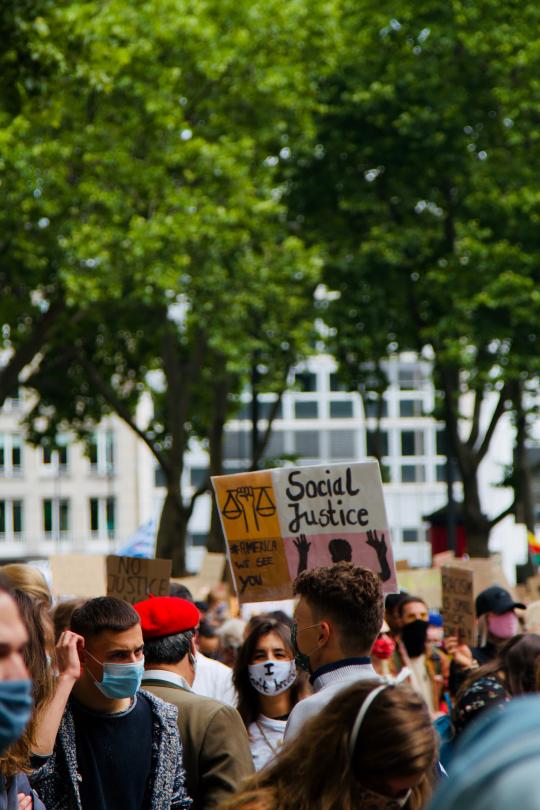
Gender equality is rightly seen as crucial to sustainable development, with its own sustainable development goal (SDG #5). Yet the interconnections between environmental sustainability and women’s empowerment have often been overlooked in practice.
Gender bias is still deeply embedded in cultures, economies, political and social institutions around the globe. Apart from simply being wrong, this is a key blockage system, that prevents women from playing a full part in society and in many of the most relevant decision-making processes.
In fact, in most societies and economies, women’s work is not accounted for, and therefore not valued properly in our economic, political, or social systems. The same as it happens with natural resources and nature’s services to mankind. Women and Nature are both treated as “passive resources”.
To tackle Gender Equality problems, the UN, in the 2017 COP23, adopted the Gender Action Plan, which comprehends not only a stand-alone Goal on gender equality and the empowerment of women and girls, but also gender equality targets in other Goals, and a more consistent call for sex disaggregation of data across many indicators.
We know that women are more affected by poverty, more vulnerable to environmental degradation and climate change. They earn at lower levels (according to UN data, women earn 24% less than men globally), receive less education (accounting for over 60% of the world’s illiterate) and therefore are less prepared to cope with sudden crisis, being the first to suffer from malnutrition, hence more susceptible to sickness and less likely to obtain care. During wars or conflict, women often have fewer resources to protect themselves and, with children, frequently make up the majority of displaced and refugee populations.
Women have the right to equal access to and benefits from the several means of implementation. They also need to lead decisions being made.
The UN acknowledges that “Gender Equality is central to all of the SDGs!”. But also shows us, in their calculations, that we are far from achieving it in many different areas; as an example, at the current rate, gender equality in the highest positions of power as Heads of State will not be reached for another 130 years.
A 2020 analysis by Mercer of over 1,100 organizations across the world found a leaky pipeline for women in leadership, with the representation of women decreasing as the levels progress:
- Executives: 23%
- Senior managers: 29%
- Managers: 37%
- Professionals: 42%
- Support staff: 47%
So, for sure, promoting Gender Equality across the world is the right thing to do. For governments, societies, and corporations!
But is this only a humanitarian cause, or is there a real business case for companies to support such an important theme?
There are several different examples that prove that gender equality is “good for business”.
When more women work, economies grow. Women’s economic empowerment boosts productivity increases economic diversification and income equality in addition to other positive development outcomes. For example, according to UN Women, increasing the female employment rates in OECD countries to match that of Sweden, could boost GDP by over USD 6 trillion. Conversely, it is estimated that gender gaps cost the economy some 15 percent of GDP.
Companies greatly benefit from increasing employment and leadership opportunities for women, which is shown to increase organizational effectiveness and growth. It is estimated by the UN that companies with three or more women in senior management functions score higher in all dimensions of organizational performance. Research by Deloitte suggests companies with a gender-inclusive culture are six times more likely to be innovative. By staying ahead of changes, they are twice as likely to hit better financial targets.
Catalyst recently shared a global study on diversity and inclusion, where we can find relevant conclusions such as:
- Gender diverse organizations are more successful at recruiting and retaining talent; people who feel included are less willing to leave, feel more committed to the company and show higher productivity rates; McKinsey, in their “Women on the workplace 2021”, tells us that employees with women managers are more likely to say that their manager has supported and helped them during the past year;
- Diverse teams are critical for innovation; they include different viewpoints or thinking styles and produce better intellectual outputs, while better managing group conflicts;
- Organizations with gender-inclusive business cultures and practices are 57.8% more likely to improve their reputations; consumers are more likely to purchase their products and employees praise for high ethical values;
- Boardroom diversity strengthens Environmental, Social, and Governance (ESG) performance; when corporate boards include members with diverse backgrounds and experiences, they are better able to recognize the needs and interests of different stakeholder groups. Gender-diverse boards outperform non-diverse boards in ESG activities!
Many more statistics could be referred, but I believe that the business case for gender diversity in companies is made. Eventually, we need a transformation in our economic thinking and new definitions of progress (GDP, for sure, is not “making it for us” anymore). To drive change, companies need to invest deeply in all aspects of diversity, equity, and inclusion. Companies need to create a culture that fully leverages the benefits of diversity — one in which women, and all employees, feel comfortable bringing their unique ideas, perspectives, and experiences to the table. When women are respected and their contributions are valued, they are more likely to be happy in their jobs and to feel connected to their co-workers. And companies are more likely to improve their overall results (yes, including profit!).
Have a great and impactful week!
Marta Lima
Executive in Residence
Center for Responsible Business & Leadership
This Newsletter covers SDG 5 and 10.
This article refers to edition #122 of the "Have a Great and Impactful Week" Newsletter.
Subscribe here to receive the weekly newsletter